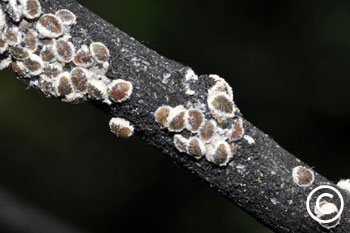European Elm Scale Resistance
Invasive tree pests and human bacteria have something in common: both can develop a resistance to the substances used to treat them. European elm scale, the furry-edged oval insect that causes stunted foliage, early leaf drop and branch damage, has become resistant to the neonicotinoid insecticides that was used for years to eliminate it. In fact, use of these insecticides has been shown to actually worsen the infestation.
As early as January 2015, the Denver Post reported that entomologists at Colorado State University were looking for alternatives to treat European elm scale. Some pesticides, like the insect
growth regulator pyriproxifen continue to be effective. But in many cases, preventive care is the best Plan B.
Working with a certified arborist, many homeowners have found that a healthy elm can fight off European elm scale on its own. Deep root watering and deep root fertilization can be the boost an elm needs to develop a strong immune system. Proper tree trimming can also help an elm stay healthy as limited nutrients (including sunlight) reach every part of the tree.
In areas like the northern Front Range, where it may be too late for preventive care, tree specialists are formulating a Plan B that includes trunk injected treatments and soil applications. The chemical compounds used in these treatments can require a high level of math proficiency to perfect the mixture so each tree is indeed helped and not damaged. Percentage of concentration and accurate ratios of multiple insecticides are often best left to tree specialists.
Protecting and treating trees has become a major headache for Colorado homeowners. SprayTech, Colorado weed and tree spraying specialists, wants to help ease that pain. For professional identification of and/or a preventive or infestation treatment plan for European elm scale, contact SprayTech at 720-248-0000.


